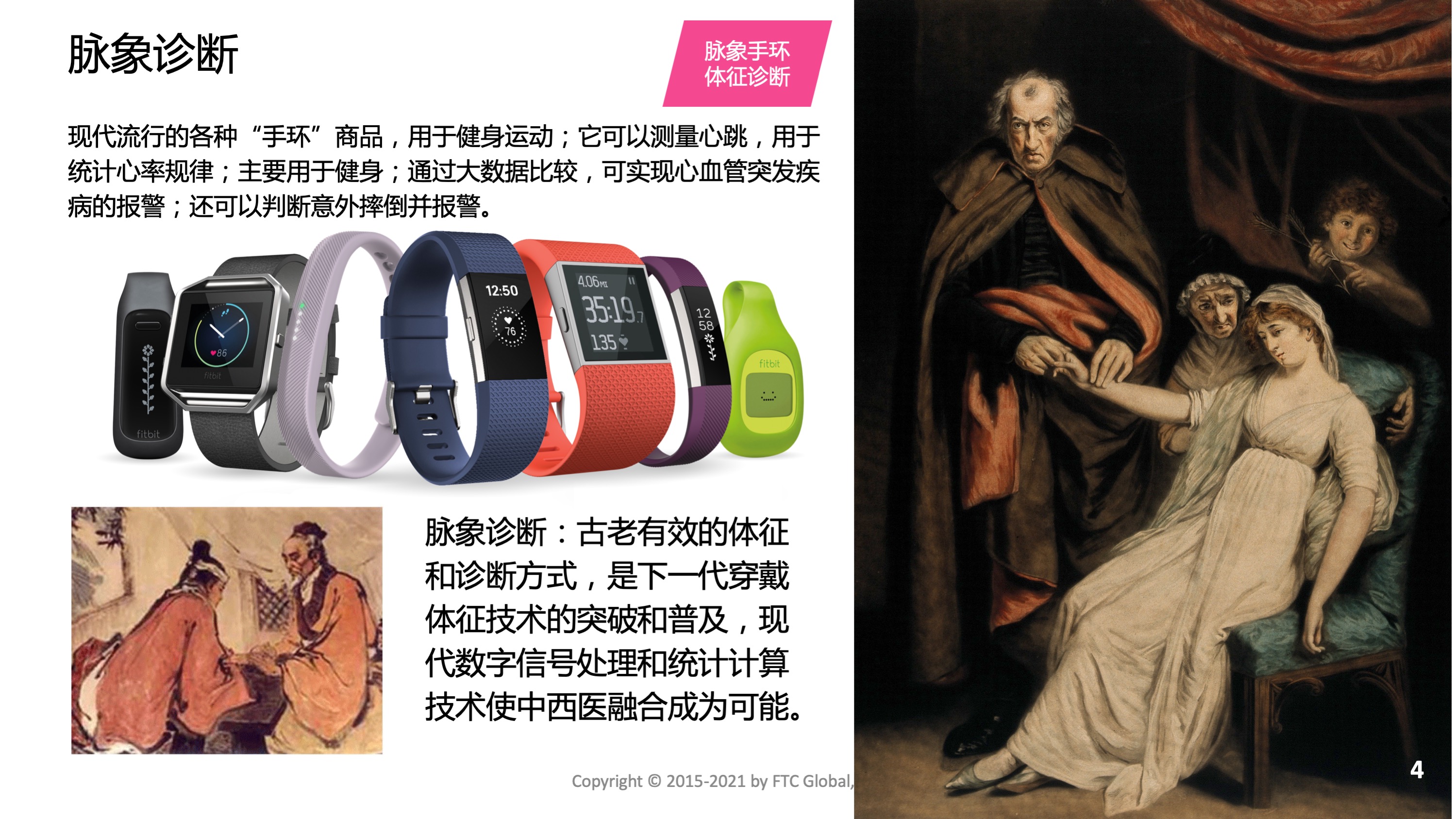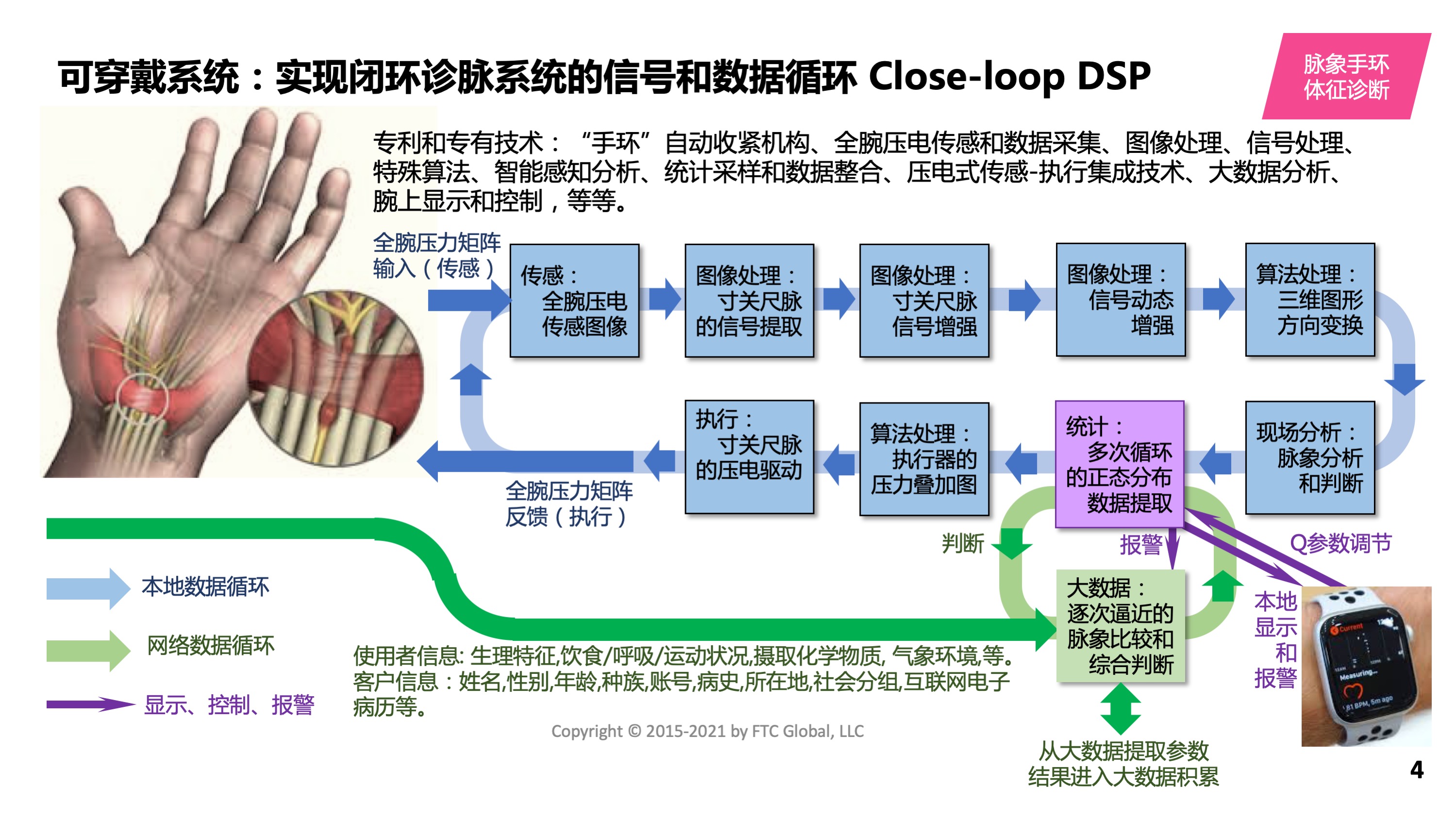Popular consumer wearable devices such as wrist rings connected with mobile communication, are useful for health, recreation and vital sign monitoring applications. With cloud computation further connected to medical demographic database (big data), this type of devices becomes powerful with potential to real-time diagnosis. Only sufficient means of sensors are needed.
The state-of-the-art portable or wearable sensing techniques are based on pulse sensing, it can be derived into multiple vital parameters such as heart beat characterization, EKG, blood pressure, blood oxygen, that coordinates with the user’s personal information, and them references to demographic information on the cloud database. This close-loop feedback can be used to analyze user’s health condition instantly or in histogram. To user it statistically diagnoses, to system it accumulates more comprehensive health statistics. In both directions, these opens a field of infinite data acquisitions, enrichments and personal heals instruction.
However the bottleneck here is the so far limited sensing techniques. Yes it can be thorough, but needs more sensors and wires in the portable or wearable system. For example a diagnostic level EKG needs 5-7 sensor points on a human’s torso and limps. They are hardly wearable without special devices. An astronaut in space, a soldier in field or a patient in IUC can were, but not on daily basis of regular human.
But Pulse Imaging (3D reaction measurement of pressure sensation) have been practiced for medical diagnosis for many many years through humans history. In modern days we can sense and process pulse images with help of digital signal processing (DSP), AI algorithms and statistic sourcing. Yes, it can take place in a manner of portable, wearable, wireless and in light-weight, just on a common wrist ring device.

